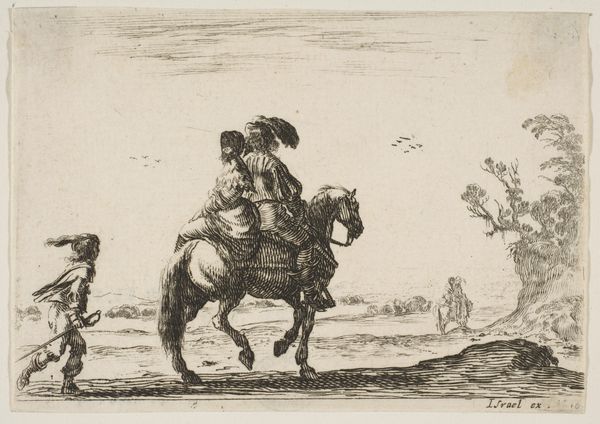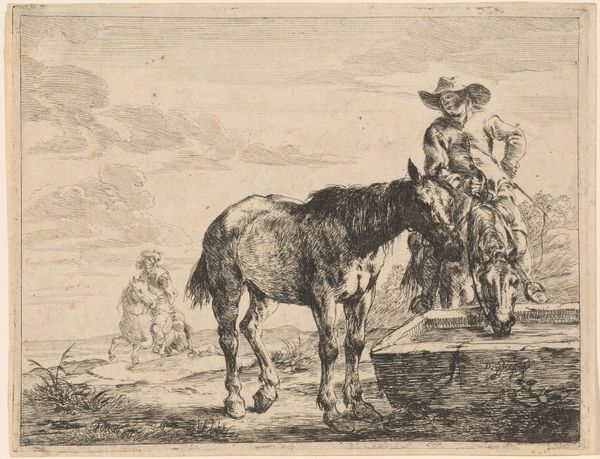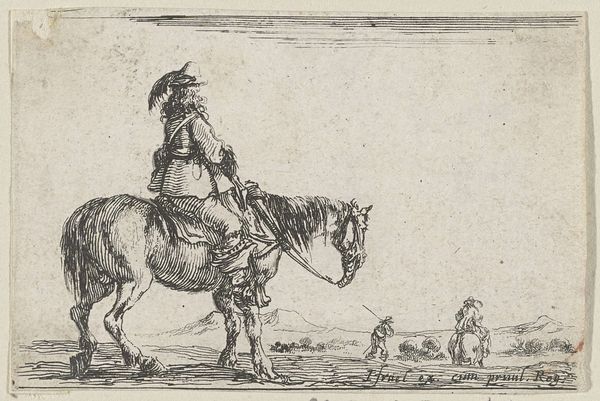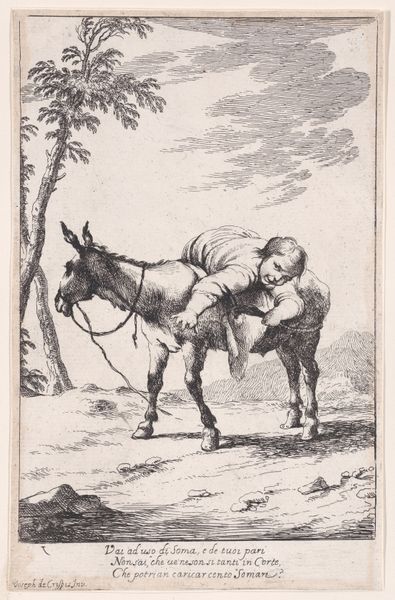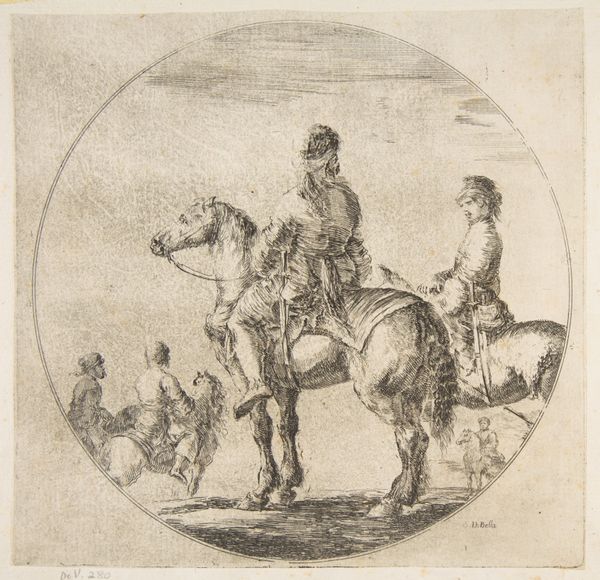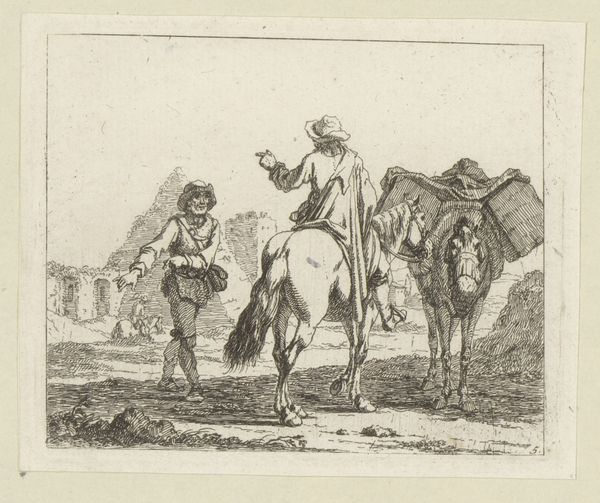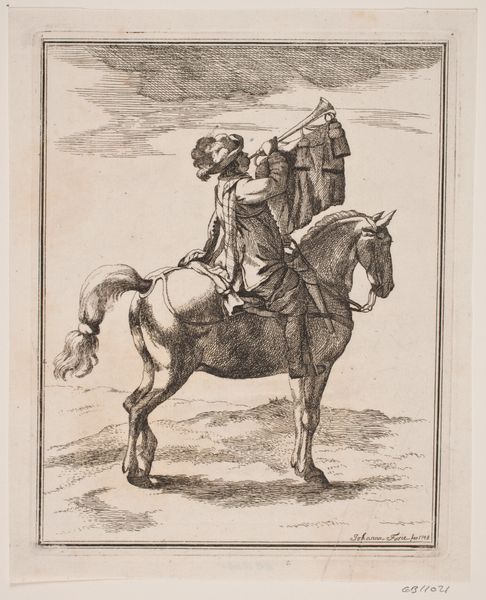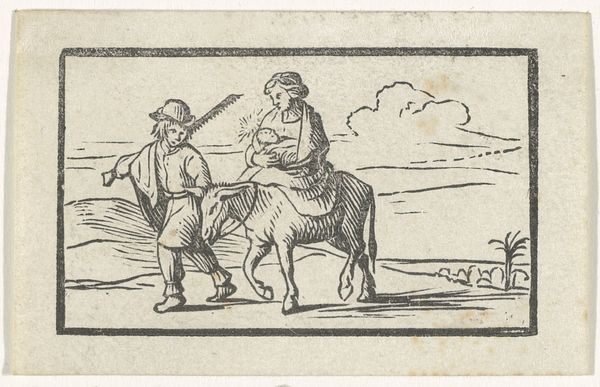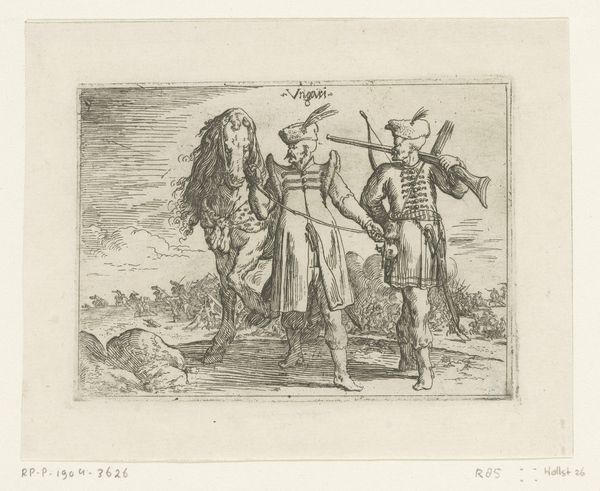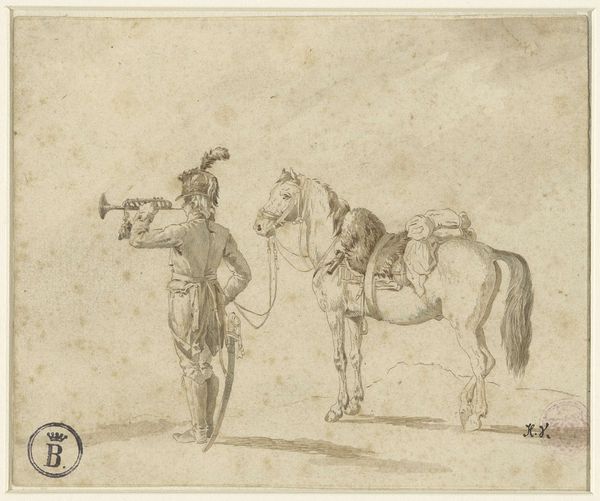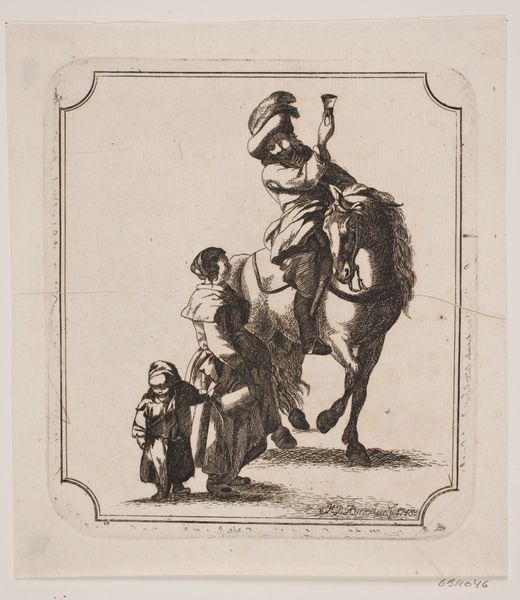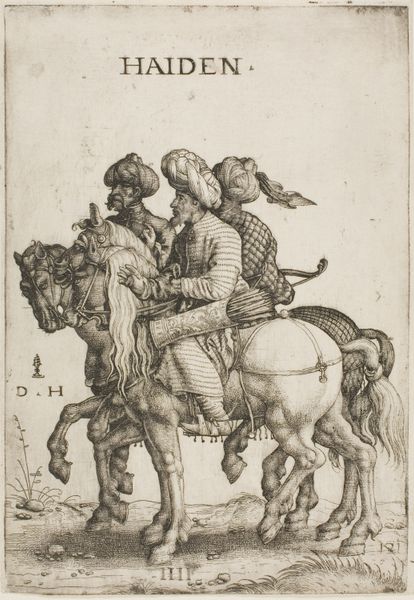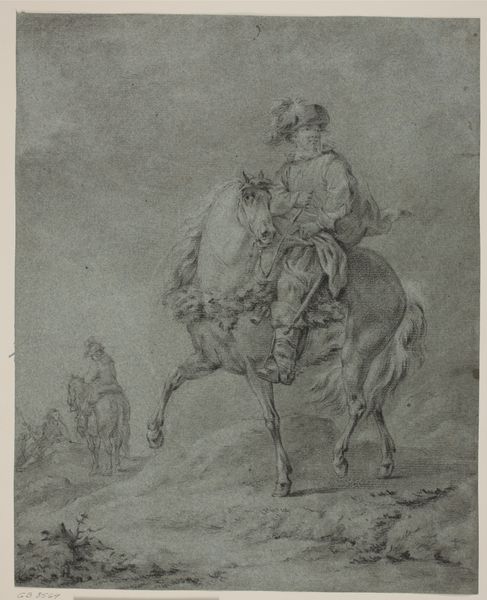
Plate 6: a peasant on horseback in profile facing the right, holding a basket and talking to another man standing behind the horse, from 'Diversi capricci' 1644 - 1647
0:00
0:00
drawing, print, etching
#
portrait
#
drawing
#
baroque
# print
#
etching
#
caricature
#
landscape
#
figuration
#
horse
#
genre-painting
#
italian-renaissance
Dimensions: Sheet: 3 1/8 x 3 7/8 in. (8 x 9.9 cm)
Copyright: Public Domain
Editor: This is Plate 6 from Stefano della Bella's 'Diversi capricci,' dating from the mid-17th century. It's an etching depicting a peasant on horseback conversing with a man standing beside the horse. It strikes me as quite intimate, like a fleeting moment captured. How do you interpret this work? Curator: This piece provides a fascinating glimpse into the social dynamics of its time. Considering the Italian Renaissance influences and the Baroque style, it presents the lives of ordinary people. We must question: who had access to horses, and how might this seemingly simple exchange reflect the era's power structures and class differences? Editor: So you're saying that the interaction itself carries a weight beyond just the surface level? Curator: Precisely. Consider the ‘genre-painting’ aspect; Bella wasn’t simply representing people but making a commentary. Does the peasant's basket signify labor? Does their attire represent status? We have to contextualize it within the broader understanding of the Renaissance's fascination with humanist ideals and emergent socio-economic shifts. It reflects this changing social landscape. Editor: I didn’t think about how those small details could speak to a much larger societal picture. Curator: Also, remember that ‘caricature’ isn’t merely about humor. It amplifies certain characteristics, possibly to critique them. How might Bella's choices in rendering these figures serve as subtle social commentary? Think of the horse, and who owns the horse! This print pushes us to ask who is represented, and for whom? Editor: That gives me a completely different way of looking at it. Curator: It’s not just an image; it is a historical artifact. Editor: Absolutely, this has shown me how much richer art becomes when we look at it through an activist lens. Thanks!
Comments
No comments
Be the first to comment and join the conversation on the ultimate creative platform.
